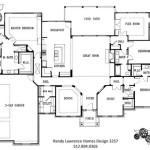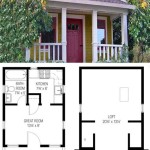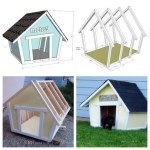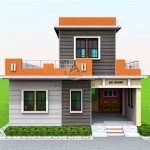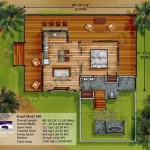Cozy House Plans: Create Your Dream Home Today
The concept of "cozy" in home design transcends mere aesthetics; it embodies a feeling of warmth, comfort, and security. Cozy house plans are designed to foster a sense of intimate living, often prioritizing functionality and a connection to the surrounding environment. These designs emphasize natural light, comfortable materials, and efficient use of space to create a haven where residents can relax and recharge. This article will explore the key elements of cozy house plans, examining the architectural features, interior design principles, and practical considerations that contribute to their creation.
The appeal of cozy house plans lies in their ability to provide refuge from the stresses of modern life. Unlike sprawling mansions that can feel impersonal, cozy homes are intentionally scaled to promote a sense of closeness and connection among inhabitants. Architectural styles often associated with cozy homes include cottages, bungalows, farmhouses, and cabins, each offering a unique interpretation of the core principles of comfort and livability. The selection of a specific cozy house plan is a deeply personal process, dependent on individual needs, lifestyle, and the unique characteristics of the building site.
Key Elements of Cozy Architecture
Cozy architecture prioritizes human scale and promotes a feeling of intimacy through a variety of design elements. These include thoughtful space planning, strategic use of natural light, and the incorporation of natural materials. A successful cozy house plan seamlessly blends form and function, creating a visually appealing and functionally efficient living space.
One of the defining characteristics of cozy architecture is its emphasis on smaller, interconnected spaces. Open floor plans can sometimes diminish the feeling of coziness, so cozy designs often incorporate defined rooms that offer a sense of enclosure. However, these rooms are not isolated; they are carefully connected to facilitate a natural flow of movement and interaction. Features such as arched doorways, wide hallways, and strategically placed windows can enhance the sense of connection between spaces while still maintaining a sense of privacy and definition.
Natural light plays a crucial role in creating a cozy atmosphere. Large windows, skylights, and strategically placed doors allow sunlight to flood the interior, creating a warm and inviting ambiance. The placement of windows is carefully considered to maximize exposure to sunlight while also providing privacy and framing views of the surrounding landscape. The use of light-colored paint and reflective surfaces can further enhance the effects of natural light, making even small spaces feel bright and airy.
Natural materials are integral to cozy architecture. Wood, stone, brick, and other natural elements contribute to a sense of warmth and authenticity. Exposed beams, wood-burning fireplaces, and stone accents can add character and texture to the interior. The use of natural materials extends beyond structural elements to include flooring, countertops, and other finishes. These materials not only enhance the aesthetic appeal of the home but also contribute to a healthier and more sustainable living environment.
Beyond materials, the exterior of a cozy home often incorporates features that invite residents to connect with the outdoors. Porches, patios, and decks provide spaces for relaxation and outdoor entertaining. Landscaping is carefully planned to create a sense of privacy and tranquility. Features such as gardens, pathways, and water features can further enhance the connection between the home and its natural surroundings.
Interior Design Principles for a Cozy Home
Interior design plays a critical role in transforming a house plan into a truly cozy home. The selection of furniture, colors, textures, and accessories can significantly impact the overall feeling of comfort and warmth. A thoughtful and well-executed interior design scheme can enhance the architectural features of the home and create a harmonious and inviting living space.
Comfortable furniture is essential for creating a cozy interior. Oversized sofas, plush armchairs, and soft cushions invite relaxation. The selection of furniture should prioritize comfort and functionality over purely aesthetic considerations. Natural fabrics such as cotton, linen, and wool are often preferred for upholstery and textiles, as they offer a soft and inviting feel.
Color palettes play a significant role in creating a cozy atmosphere. Warm, earthy tones such as beige, brown, tan, and rust are often used to create a sense of warmth and intimacy. Cooler colors can also be incorporated, but they should be balanced with warmer tones to prevent the space from feeling cold or sterile. Accent colors can be used to add pops of vibrancy and personality to the overall design.
Texture is a key element in creating a cozy interior. Layering different textures, such as knitted blankets, woven rugs, and velvet pillows, adds depth and visual interest to the space. The interplay of textures creates a tactile richness that enhances the feeling of comfort and warmth. Natural textures such as wood grain, stone, and leather can further contribute to the overall sense of coziness.
Accessories play a vital role in personalizing a cozy home. Bookshelves filled with favorite reads, framed artwork, and decorative objects can add character and personality to the space. Plants can bring life and vibrancy to the interior, while candles and lamps can create a warm and inviting ambiance. The selection of accessories should reflect the individual tastes and preferences of the homeowner.
Lighting is a critical element in creating a cozy atmosphere. Soft, warm lighting is preferred over harsh, bright illumination. The use of dimmer switches allows for adjusting the level of light to suit different activities and moods. Lamps, sconces, and recessed lighting can be used to create a layered lighting scheme that provides both task lighting and ambient light.
Practical Considerations When Choosing a Cozy House Plan
Selecting a cozy house plan involves careful consideration of practical factors such as budget, site conditions, and personal needs. A successful cozy home is not only aesthetically pleasing but also functionally efficient and financially sustainable. Thorough planning and research are essential to ensure that the chosen house plan meets the homeowner's long-term needs and aspirations.
Budget is a primary consideration when choosing a cozy house plan. Construction costs can vary widely depending on the size, complexity, and materials used. It is important to establish a realistic budget and to work with a builder or architect who can help to manage costs effectively. Prioritizing essential features and making strategic choices about materials and finishes can help to keep the project within budget.
Site conditions can also significantly impact the choice of a cozy house plan. The topography, soil type, and climate of the building site can influence the design and construction of the home. It is important to consult with a geotechnical engineer to assess the stability of the soil and to determine the appropriate foundation type. The orientation of the house should be carefully considered to maximize exposure to sunlight and to minimize exposure to harsh weather conditions.
Personal needs and lifestyle are also important factors to consider. The size and layout of the house should be tailored to the specific needs of the homeowner and their family. Considerations such as the number of bedrooms and bathrooms, the need for home office space, and the desire for outdoor living areas should be taken into account. The house plan should also be adaptable to changing needs over time.
Energy efficiency is an increasingly important consideration when choosing a cozy house plan. Energy-efficient design features such as insulation, energy-efficient windows, and solar panels can significantly reduce energy consumption and lower utility bills. A well-insulated home will also be more comfortable year-round, reducing the need for excessive heating and cooling. Sustainable building materials and practices can further enhance the environmental performance of the home.
Finally, it is important to work with experienced professionals throughout the design and construction process. A qualified architect, builder, and interior designer can provide valuable guidance and expertise, ensuring that the project is completed to the highest standards. Clear communication and collaboration among all parties are essential for a successful outcome. Regular site visits and progress meetings can help to identify and address any potential issues early on.

Warm And Welcoming Cottage House Plans Blog Dreamhomesource Com

Warm And Welcoming Cottage House Plans Blog Dreamhomesource Com

How To Design A House From Sketch Reality

Dream Single Story House Plans Customizable One Homes

Southern Living Dreamy House Plans With Front Porches Blog Dreamhomesource Com

8 Fabulous Family Home Plans Blog Dreamhomesource Com

Small Bungalow House Plans We Love Blog Dreamhomesource Com

How To Design A House From Sketch Reality

Online House Floor Plans Your Best Guide To Home Layout Ideas Decorilla Interior Design

10 Small House Plans With Open Floor Blog Homeplans Com
Related Posts

